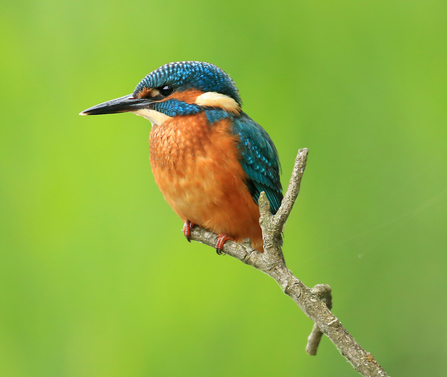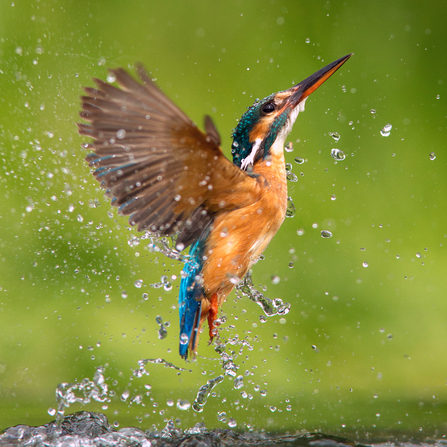You can’t mistake a kingfisher for anything else. They’re one of our most dazzling birds. Often the only glimpse you get is a flash of electric blue as they zip low and fast along a river or stream, or across a lake or marsh.
A better view, usually when the kingfisher perches on a low-hanging branch to scan the water for food, reveals a gorgeous combination of bright orange, white, that metallic blue back, and an almost iridescent blue-green.


